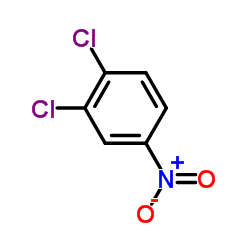Low glutathione S-transferase dogs.
Toshiyuki Watanabe, Tomomi Sugiura, Sunao Manabe, Wataru Takasaki, Yoshihiko Ohashi
Index: Arch. Toxicol. 78(4) , 218-25, (2004)
Full Text: HTML
Abstract
Liver and kidney glutathione S-transferase (GST) activities to 1,2-dichloro-4-nitrobenzene (DCNB) as a substrate (GST-D activities) were measured in 280 dogs from five different breeders, and significant individual differences in this activity were observed in both organs. Interestingly, 34 out of the 280 dogs (i.e. 12.1%) were those in which liver GST-D activities were less than 10 nmol/min per mg cytosolic protein, "low GST dogs", and the other dogs were classified as "middle" and "high" GST dogs for which the liver GST-D activities were 10-80 and >80 nmol/min per mg protein, respectively, and occurred at similar percentages (41.4% for the middle GST dog and 46.4% for the high GST dog). Furthermore, the existence of the low GST dogs was not limited to one particular breeder. There was a good correlation (r=0.910) between the liver and kidney GST-D activities, showing low activity in not only the liver but also the kidney in the low GST dogs. Although liver GST activity to 1-chloro-2,4-dinitrobenzene as a substrate (GST-C activity), catalyzed by various GST isozymes in dogs, was significantly correlated with liver GST-D activity, GST-C activity showed more than 450 nmol/min per mg protein even in the low GST dogs. There was no significant difference in cytochrome P450 content, 7-ethoxycoumarin O-deethylase activity or UDP-glucuronosyltransferase activity to p-nitrophenol as a substrate between low GST dogs and the other dogs. Finally, remarkably high plasma concentrations of DCNB were observed in the low GST dogs after single doses of DCNB at 5 or 100 mg/kg. The individual differences in GST-D activity are probably attributable to the content and/or activity of the theta class GST isozyme Yd(f)Yd(f) since it has been reported that glutathione conjugation of DCNB is specifically catalyzed by GSTYd(f)Yd(f) in dogs. In conclusion, we identified a number of low GST dogs in which the GST-D activities were not observed either in vivo or in vitro. The feasibility of using a single low dose of DCNB to phenotype dogs based on GST-D activity was confirmed. It was also suggested that low GST dogs have high susceptibility, including unexpected toxicity or abnormal exposure, to chemicals metabolized by GSTYd(f)Yd(f).
Related Compounds
| Structure | Name/CAS No. | Molecular Formula | Articles |
|---|---|---|---|
 |
1,2-Dichloro-4-nitrobenzene
CAS:99-54-7 |
C6H3Cl2NO2 |
|
Short-term black tea intake modulates the excretion of urina...
2004-08-01 [Arch. Toxicol. 78(8) , 477-82, (2004)] |
|
Mitogen-activated protein kinase p38b interaction with delta...
2012-01-01 [J. Insect Sci. 12 , 107, (2012)] |
|
Glutathione conjugation of perchloroethene in subcellular fr...
1998-11-06 [Chem. Biol. Interact. 116(1-2) , 31-43, (1998)] |
|
Expression of the theta class GST isozyme, YdfYdf, in low GS...
2006-05-01 [Arch. Toxicol. 80(5) , 250-7, (2006)] |
|
Quantitative and qualitative gender-related differences in j...
2000-12-15 [Life Sci. 68(4) , 467-74, (2000)] |